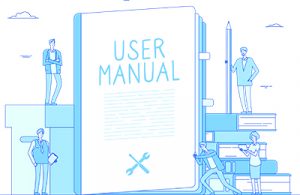At the heart of manufacturing, technical documentation is the foundation for every step, every stage, and every process. What is technical documentation? In its most basic definition, it is tech-related content and form. In reality, it’s a little more complicated than that.
Technical documentation can take many forms – from computer-aided design (CAD) documentation packages to internal work instructions and standard operating procedures (SOPs) to engineering specifications and end-user documentation and instructions. The challenge when creating any technical document, particularly those that will guide the user, is acquiring an intimate knowledge of the product or service and all corresponding documentation from conception to implementation.
The secondary challenge is communicating that knowledge, whether it is text-based instructions, illustrations, multi-media design, or a combination of the aforementioned, in the most accurate, concise, and efficient way possible. This must also be accomplished while maintaining version control of the document and its life-cycle progression as it relates to its subject matter.
The process of technical-documentation creation aligns with several of the values that are paramount in Lean Manufacturing practices. The driving force: Maximize customer value while minimizing resources. With this charge in mind, being Lean in terms of technical writing hinges on the execution of five key principles:
 Keep it Simple – Utilizing Controlled Language: Using controlled language (words that have a clear and singular meaning while structuring content for readability) eliminates ambiguity and reduces complexity for the user and allows for ease of language translation. Creating a glossary of controlled language allows for consistency and efficiency when creating additional technical documentation and when revising existing content.
Keep it Simple – Utilizing Controlled Language: Using controlled language (words that have a clear and singular meaning while structuring content for readability) eliminates ambiguity and reduces complexity for the user and allows for ease of language translation. Creating a glossary of controlled language allows for consistency and efficiency when creating additional technical documentation and when revising existing content.- Standardize – Form, Fit, and Function: Conforming to corporate style guidelines, editorial standards, and applying controlled attributes (such as individual drawings and table revisions) can standardize a company’s documentation-creation process regarding its design, content structure, and branding message.
- Audience – Know Your Audience: Who will be reading the documentation? Will it be for reference, instruction, or simply informational? Knowing the audience determines the type of document that needs to be created. The languages the document may need to be translated into and its content should also be determined. For example, a software configuration guide created for an engineer may not include the same information as a reference guide outlining network/server requirements for an IT guru.
- Multi-Channel Publishing – Branching Your Information Distribution: Due to the many ways information can be conveyed and consumed, it is critical to ensure that the technical content can be accessible by the user on any media platform, including online, tablet, smartphones, and other mobile devices, and print. Multiple publishing solutions and creating content for responsive design ensure that the technical documentation reaches the intended audience when it’s needed and where it’s needed.
- Future-Proof – Plan for Tomorrow, Next Month, and Next Year: Build your technical documentation infrastructure and maintenance process for sustainability. Looking into the future, structure the documentation for both ease of creation and for revisions and version control. Planning ahead drastically reduces cost and deliverable timelines down the road.
Adherence to and implementation of these key principles will yield not only exceptional documentation but also:
- Reduced technical-support calls
- Enhanced core competencies, such as customer support
- Protection for the product and installer base
- Compliance with quality standards (ISO-certification standards)
- Conformance to third-party compliance regulations (ETL, UL, CE, ATEX, FDA, and more)
- Unified brand messaging that penetrates every level of customer needs
In the end, the key is remembering that from project initiation to implementation to publication, technical documents are “living” creatures that must remain in-sync with the subject matter’s release cycle and, ultimately, its entire life cycle.
